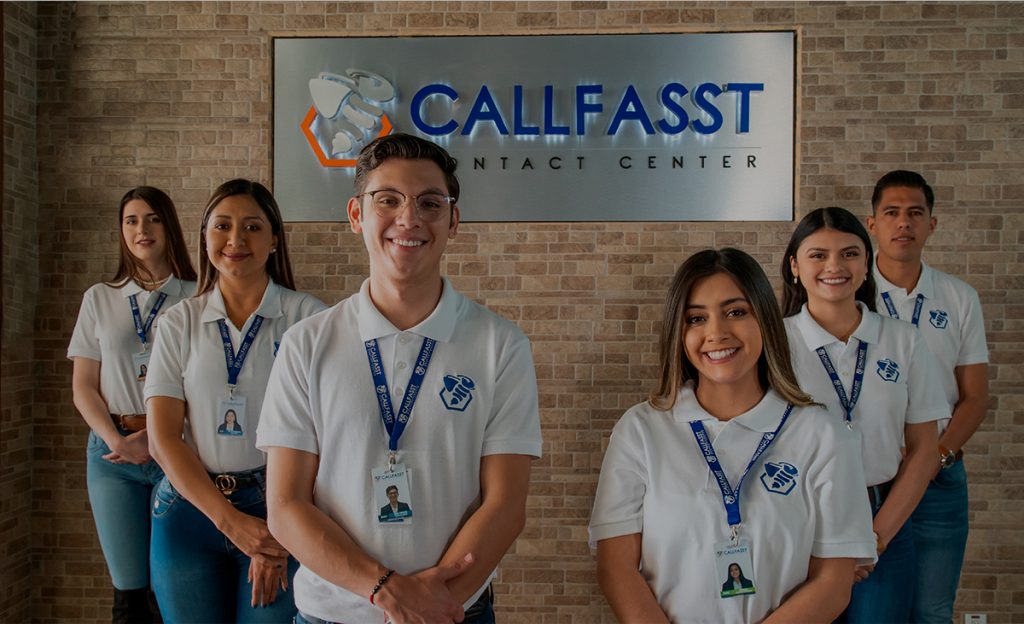
Our team shares its experience in customer service
In previous posts of this blog we have shared the importance of good customer service, tactics to improve customer service and other tips to measure the good performance of a contact center; all this based on our experience and the information we have gathered from specialists and reports. However, on this occasion we have decided that the best people to share what makes a good call in a contact center is our team, since they are the ones who receive them (or make them) while maintaining a high level of professionalism even when scenarios can be harsh.
What is required to have perfect calls in customer service?
For most of the people interviewed there are several common characteristics, such as efficiency or empathy. However, they all agree that active listening and service attitude are the elements that have helped them the most to make satisfactory calls even in moments that seemed destined not to be so.
For Diana Hernandez, Quality Analyst with 6 years of experience in CallFasst, active listening is the focus point for a perfect call: “It is about how perceptive we are to identify the real problem of the customer, I emphasize real because not all of them are fully aware of what they require”.
This sounds quite simple, but it is true that telephone advisors, particularly those who work in areas to deal with user complaints, face situations that test their active listening or service attitude. Myriam Álvarez, also Quality Analyst, has been within our company for more than 12 years and believes that, being confident when taking a call, showing empathy and friendliness have helped her make the perfect calls. However, she recalls one occasion when a very annoyed customer kept insulting her with expletives: “I tried not to lose my head or get angry at everything he was saying. In the end, I held to my process and ended the call with a satisfied customer”. Although the solution is not always in the hands of the advisor, the complaint can always be addressed, and that is where the service attitude makes the difference.
Therefore, it is important that advisors receive all these tools during training. It is not only a matter of teaching the processes, protocols or the functioning of the software and hardware, but really instilling a philosophy of customer service. This is what Karla Orta, Quality Analyst, says: “Training provides the necessary materials to know the information, processes and tools we are going to work with”, but she also points out: “Experience is gained over time, we learn from our mistakes and seek more information to be able to provide a more complete service in future calls, the support provided by middle management and being able to be updated with information or changes is also necessary”. Laura Montoya, who has been working at CallFasst for 17 years, adds: “In addition to Training, other fundamental areas are Operations, they helped me and supported me on a daily basis with each of the different scenarios of my calls […] and hand in hand with the Quality area I was able to detect my areas of opportunity and strengths to eradicate them and have a constant improvement”.
What is the X- Factor that makes a call a real success?
To this question, the people interviewed answered that showing empathy and security with the client are distinguishing elements, as well as the real interest in providing a solution. Laura encompasses it in a single word: attitude. “Getting involved and putting ourselves in the user’s shoes allows us to solve, provide alternatives or fulfill their request with the certainty that, thanks to the tools and telephone etiquette, we can have the satisfaction that we were able to help someone who needed it and thus achieve their goal.”
A very clear example of the above is what Diana relates in a call she had with a senior man: “I remember very well the time when a client I attended […] required a balance clarification, but I had to send it to him by mail, when I did it as usual, the gentleman was honest and told me that he could not read or write and asked me to specify the shape of each letter: “A as the roof of a little house”, etc. […] At the end, the gentleman thanked me because it was like his tenth call of the day and he had not been able to solve his problem; that is why patience and kindness are always important to me”.
The people we interviewed have several years of experience handling calls of all kinds, and just as most of calls end successfully, such as the one Diana reports, there are others that are not usually easy. In this regard, Laura recommends: “Do not take it personally, that is, many times we have this attitude of service and support, so not being able to help frustrates us. For this, we have to be aware that with my tools and alternatives I did everything in my power”.
In summary, an adversity-proof service attitude, backed by training that provides the knowledge and tools to solve problems, is the key to being able to provide a customer service call that translates into satisfied customers.
